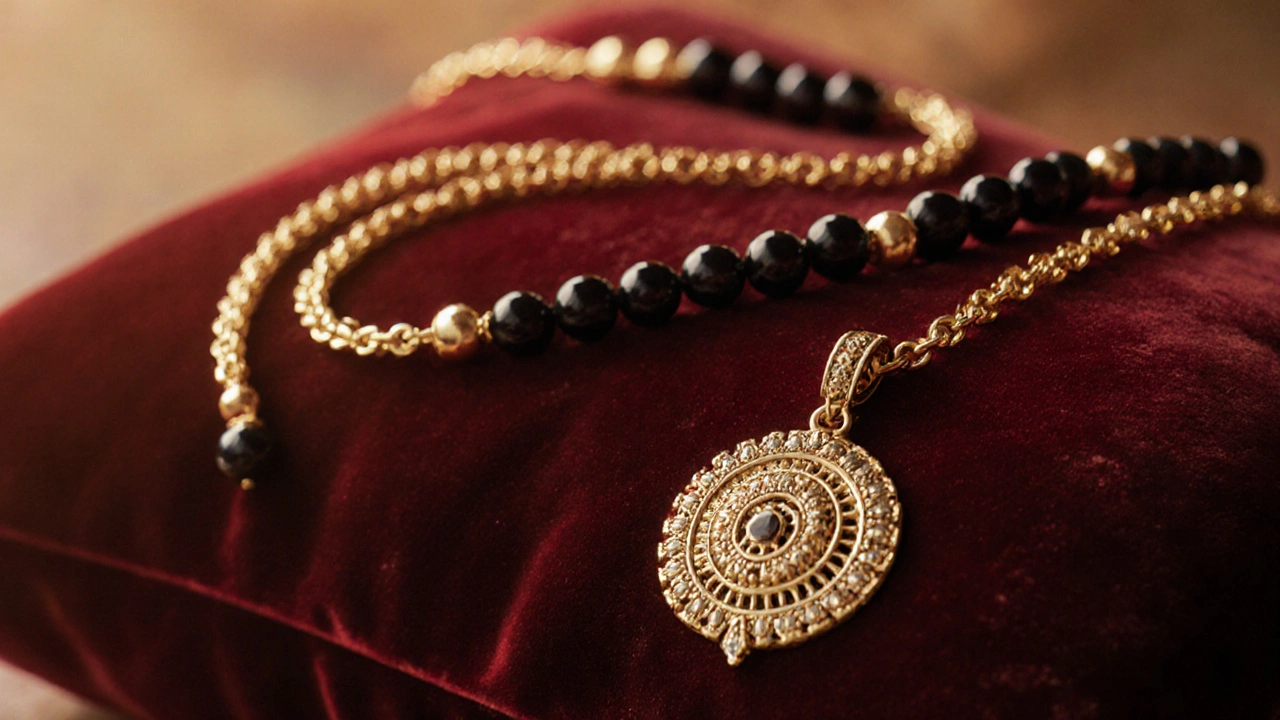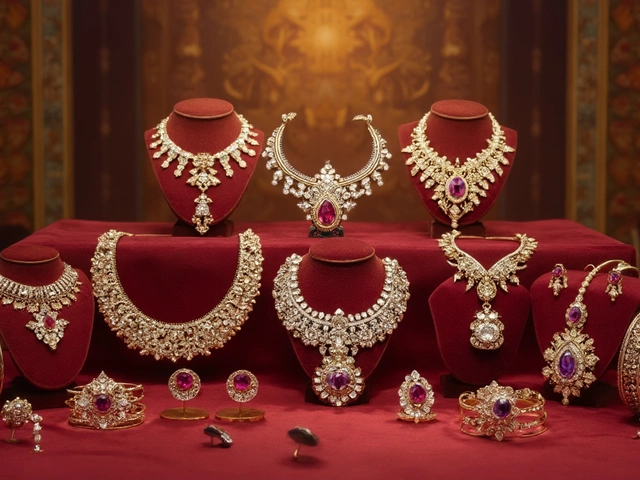Black Bead Symbolism: Meaning, Myths & Modern Trends
When talking about black bead symbolism, the belief that black beads carry protective, auspicious, or marital meanings in Indian culture. Also known as black bead meaning, it shapes how families choose jewelry for weddings, festivals, and daily wear. Black bead symbolism isn’t just a superstition; it’s a design language that links tradition, personal identity, and fashion trends. Below you’ll see how this idea weaves through different pieces and why it still matters today.
One of the most iconic uses of black beads is in the Mangalsutra, a sacred necklace worn by married women in many Indian communities. Its black bead component is said to ward off negativity and keep the marriage strong. The belief influences the choice of bead count, size, and placement, creating a direct link between black bead symbolism and the durability of marital bonds. In modern designs, artisans experiment with mixed metals and gemstone accents, but the core black bead remains the anchor of meaning.
Why Black Bangles Carry Their Own Story
Another related piece is the black bangle, a wrist ornament that signifies protection, elegance, and sometimes a rebellious edge. While many think of black bangles merely as a fashion statement, they also echo the same protective vibe found in black beads. The symbolism extends to daily life: wearing a black bangle is believed to keep bad vibes away, especially during important events. Designers now blend lacquer, enamel, and even leather to give these bangles a contemporary twist, but the underlying belief stays the same.
Beyond wedding pieces, the count of beads can also affect luck. The auspicious bead count, the number of beads considered lucky in various Indian traditions often dictates how many black beads are strung together in a bracelet or necklace. Common numbers like 7, 9, or 21 each carry a different nuance—7 for spiritual completeness, 9 for abundance, and 21 for long‑term protection. When you choose a piece, you’re not just picking a look; you’re aligning with a numeric tradition that promises good fortune.
So how does all this tie together? Black bead symbolism encompasses cultural beliefs, influences mangalsutra design, and shapes the aesthetic of black bangles and bead counts. It also requires an understanding of regional customs—North Indian families might favor larger black beads, while South Indian styles lean toward polished jet or onyx. The interplay between belief and craftsmanship creates a rich tapestry that modern designers love to reinterpret.
For anyone new to Indian jewelry, the practical takeaway is simple: look for the story behind the black element. Whether it’s a single jet bead on a mangalsutra, a set of nine black beads on a bracelet, or a pair of sleek black bangles, each piece carries a purpose beyond sparkle. Knowing that purpose helps you pick items that match your style, your rituals, and even your personal goals for protection or prosperity.
Below, you’ll find a curated list of articles that unpack each of these angles in depth—studies on common gold stud patterns, guides on caring for black bangles, deep dives into mangalsutra myths, and more. Armed with this background, you can browse the collection with confidence, knowing why a black bead matters as much as its shine. Let’s explore the pieces and insights that bring black bead symbolism to life.
Why Black Beads Are Used in Mangalsutra - Symbolism, History & Style
Explore why black beads appear in mangalsutra, their symbolism, history, material options, and care tips. Learn to pick a meaningful design that blends tradition and style.





